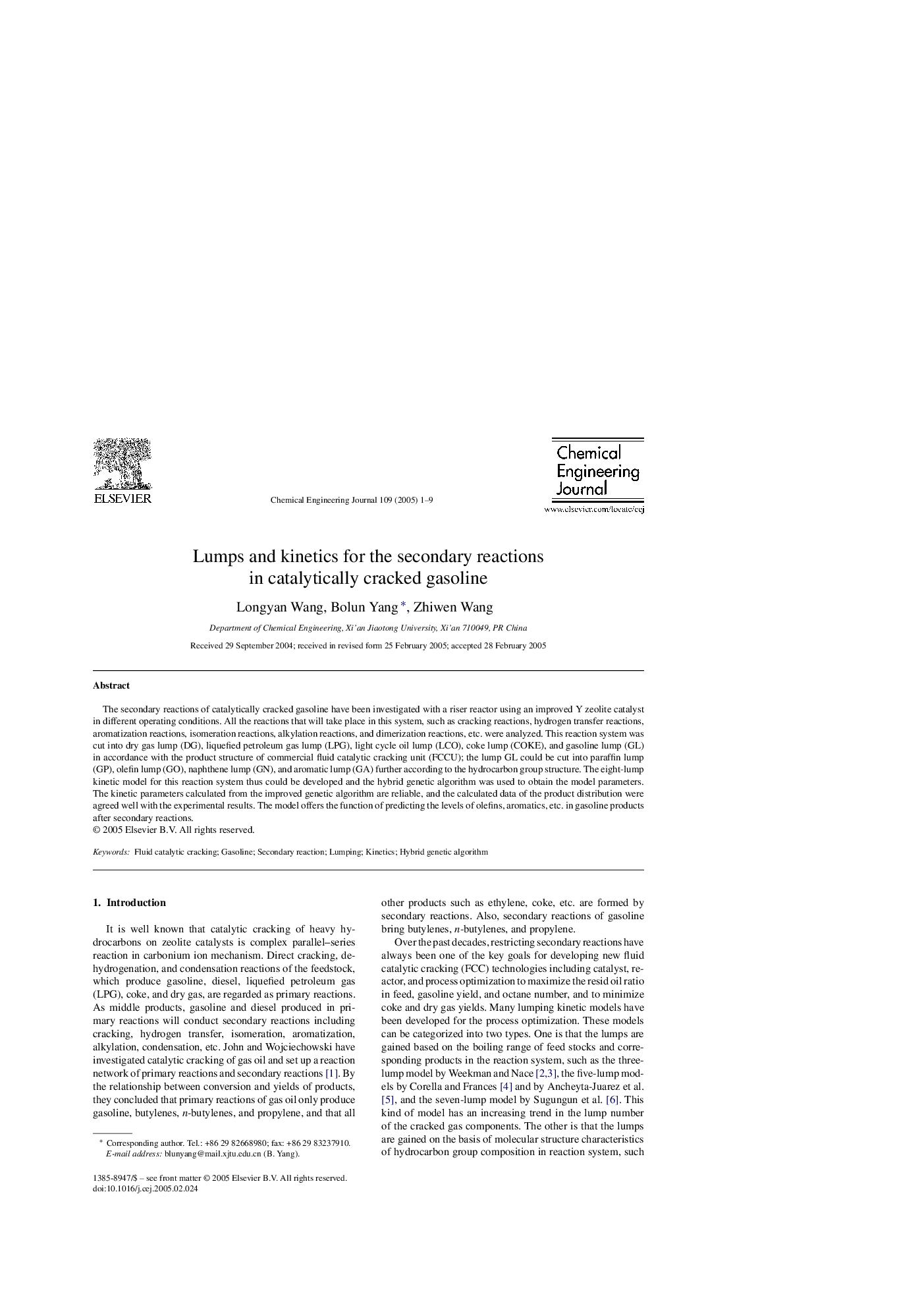| Article ID | Journal | Published Year | Pages | File Type |
|---|---|---|---|---|
| 9623809 | Chemical Engineering Journal | 2005 | 9 Pages |
Abstract
The secondary reactions of catalytically cracked gasoline have been investigated with a riser reactor using an improved Y zeolite catalyst in different operating conditions. All the reactions that will take place in this system, such as cracking reactions, hydrogen transfer reactions, aromatization reactions, isomeration reactions, alkylation reactions, and dimerization reactions, etc. were analyzed. This reaction system was cut into dry gas lump (DG), liquefied petroleum gas lump (LPG), light cycle oil lump (LCO), coke lump (COKE), and gasoline lump (GL) in accordance with the product structure of commercial fluid catalytic cracking unit (FCCU); the lump GL could be cut into paraffin lump (GP), olefin lump (GO), naphthene lump (GN), and aromatic lump (GA) further according to the hydrocarbon group structure. The eight-lump kinetic model for this reaction system thus could be developed and the hybrid genetic algorithm was used to obtain the model parameters. The kinetic parameters calculated from the improved genetic algorithm are reliable, and the calculated data of the product distribution were agreed well with the experimental results. The model offers the function of predicting the levels of olefins, aromatics, etc. in gasoline products after secondary reactions.
Related Topics
Physical Sciences and Engineering
Chemical Engineering
Chemical Engineering (General)
Authors
Longyan Wang, Bolun Yang, Zhiwen Wang,
